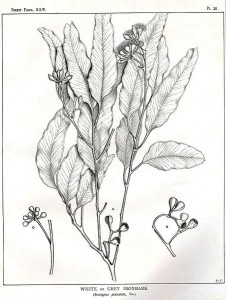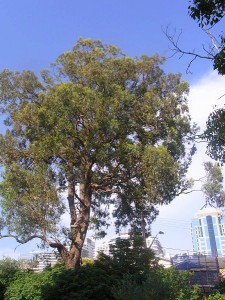I’m no artist, but I’m plenty happy many people are.
Common trade names: Grey Ironbark, Black Ironbark, Red Ironbark.
Genus: Eucalyptus paniculata
Janka Hardness (pounds-force): 2862-3664*
Description: Very hard to work. Quite heavy and dense. Heart wood is brown to red-brown. The Ironbarks, by their colorfully marketable names, are used quite a bit in outdoor applications in their native Austrialia. *There is some ambiguity to the specific scientific properties of this species. In any event, there is consensus that this species is extremely dense and hard.
Location: Australia and Oceania.
Common Aliases: Paniculata gum, ironbark Iron Bark.
Performance: Tungsten/Carbide tipped saws should be used in working Ironwood. Blunting is severe in the machining process, boring and cutting are difficult, so exercise care with very sharp tools. There are multiple mentions of planing being quite difficult for this species, and for finer works, that it was somewhat difficult to navigate. I would tend to believe the upper realm of the hardness scale range for this species.
Acclimation: Allow adequate time for the species to equalize its moisture content to your environment.
G’day, mate! We’ll be stealing your summer away soon enough…
Common Uses: Agricultural implements, boats, bridges, cabinets, floors, decks, tool handles, rail ties, vehicle parts, wharf construction.
From: The Wood Explorer and Australian Hardwood Network
Common Name(s): Grey Ironbark, Black Ironbark
Scientific Name: Eucalyptus paniculata
Distribution: SE Australia, especially coastal
Tree Size: 20-30 ft (6-9 m) tall, 2-3 ft (.6-1.0 m) trunk diameter
Average Dried Weight: 82 lbs/ft3 (1,310 kg/m3)
Basic Specific Gravity: 1.138*
Hardness: 2,862 lbf (16,300 N)
Elastic Strength: 25,113 lbf/in2
Crushing Strength: 12,223 lbf/in2
Shrinkage: Radial: 4.5%, Tangential: 7.5%, T/R Ratio: 1.67
*From Scientific American, 1881, Supplement, Vol. 12

